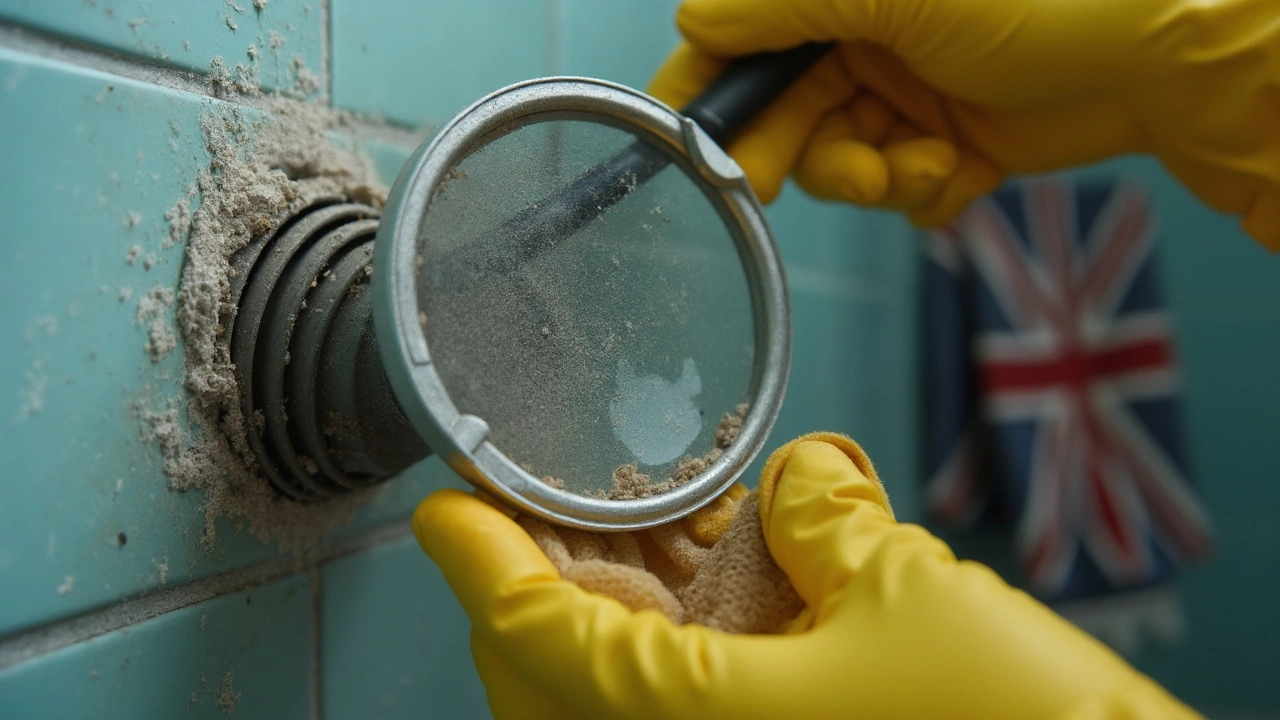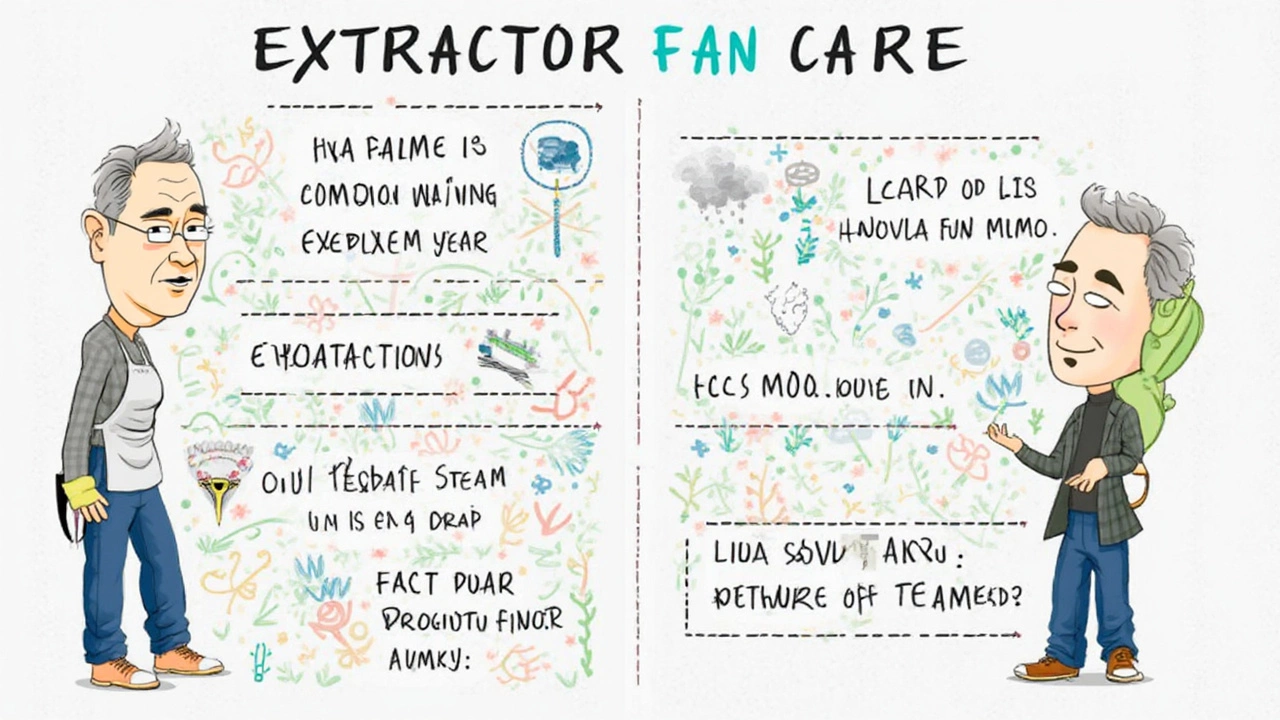Most people flip the switch on their extractor fan and never think twice. But here’s the kicker—these silent workhorses gather all sorts of grime, dust, and grease, especially in kitchens and bathrooms. Ignore them for too long, and your fan’s performance nosedives. A clogged-up fan doesn’t just work less efficiently; it could hike up your energy bill and leave your room damp, steamy, or downright smelly.
Here’s a fact that surprises a lot of folks: dust can build up inside the fan in just a few months, even if your home looks spotless. All that buildup can strain the motor. Eventually, your fan may start rattling, grinding, or refusing to start at all. That’s a repair nobody wants.
Dusting off your extractor isn’t rocket science, but skipping out on maintenance guarantees junky airflow and the risk of mold growth—especially in small, damp spaces. A little attention every few months keeps the fan running quietly and extends its life. So, yeah, maintenance isn’t just for show—it actually saves hassle and money in the long run.
- What Happens If You Skip Maintenance?
- Key Signs Your Fan Needs Attention
- How to Clean Your Extractor Fan
- Common Problems and Easy Fixes
- When to Call a Professional
What Happens If You Skip Maintenance?
Leaving extractor fan maintenance on the back burner doesn’t just make life smellier—it comes with some real hassles. Fans that never get cleaned start sucking up less air, so all that steam, smoke, or grease just hangs around. Bathrooms get muggy, kitchens stay smelly, and you might even notice a sticky layer of gunk building up on tiles or cabinets.
The bad news doesn’t stop there. When dust, cooking oil, and lint pile up on the fan blades and in the vent, the motor has to work harder to push air through. That extra strain wears the motor out faster—sometimes years earlier than it should. Replacing a fan or getting a fix isn’t cheap; you’ll wish you gave it five minutes and some wipes every now and then.
Mold loves damp, stagnant air. If you skip cleaning, all that extra moisture can settle on walls and ceilings, causing black spots or that musty smell nobody wants. Mold spores can wreck indoor air quality and aggravate allergies or asthma. A simple cleaning routine can make a night-and-day difference for your lungs and your wallet.
If you want the dry numbers, check out this quick comparison:
| Maintenance Frequency | Common Issues | Fan Lifespan (Average) |
|---|---|---|
| Every 3 months | Few to none | 8-10 years |
| Once a year or less | blockages, noise, weak suction | 4-5 years |
| Never | Mold, breakdowns, overheating | 2-3 years |
Skipping fan cleaning tips and repairs can also void your warranty. Manufacturers want proof you’ve looked after the fan. If you ever need to claim a repair, you might be out of luck if the unit’s filled with filth.
Key Signs Your Fan Needs Attention
You don’t need to be an expert to know when your extractor fan maintenance is overdue. The signs are often clear, but a lot of people ignore them until the fan completely quits. Here’s what you should watch out for before things get out of hand.
- Weak airflow: If you notice the fan isn’t pulling out steam or smells like it used to, chances are dust or grease is choking it up. This is most obvious in a kitchen fan that leaves smoke or food odors lingering way too long.
- Loud noises: A fan that’s clean and healthy should be pretty quiet. Grinding, rattling, or clanking are usually hints that dirt has found its way to the moving parts or something’s come loose inside.
- Strange smells: If your fan is pushing out musty or even burning smells, that’s a big red flag. Grease and grime can heat up on the motor or wiring and create these odors, which could mean it's time for fan repairs.
- Visible dirt or buildup: Pop the cover off and take a peek. Layers of dust or sticky gunk are a clear sign you need a clean-up session quick.
- Fan struggles to start: Flick the switch and nothing happens, or the fan starts with a stutter? That’s a sign the motor might be overloaded from too much buildup or needs professional help.
In a consumer report last year, over 50% of people who called for fan repairs noticed warning signs weeks before a real breakdown. In other words: Don’t ignore these red flags.
Keep an eye—and an ear—on your fan. Spotting and reacting to these signs early not only keeps your kitchen fan care simple but can cut down on bigger repair bills down the line.

How to Clean Your Extractor Fan
Cleaning your extractor fan isn’t nearly as complicated as some people think. In fact, it’s one of the easiest ways to keep your fan working well and avoid bigger repair bills down the line.
Before diving in, be sure the fan is turned off at the switch or, for extra safety, unplugged if possible. You don’t want any surprises.
- Remove the Cover: Most covers just snap off or are held with a couple of screws. If it’s greasy or dusty, soak it in warm, soapy water while you tackle the rest of the job.
- Vacuum the Dust: Use the nozzle of your vacuum to suck up the loose dust and fluff clogging the vents, blades, and surrounding area. This step alone can make a huge difference in performance.
- Wipe Down the Blades: Grab a damp cloth or sponge. Wipe around the fan blades and inside edges. Kitchen extractor fans especially may need a degreaser if there’s a lot of sticky buildup.
- Check and Clean the Filter: Some kitchen extractor fans have metal grease filters. Most can be popped out and washed in warm, soapy water (or even a dishwasher if yours allows). For bathroom fans, you might just need a quick dust off.
- Dry and Reassemble: Make sure everything is dry before putting it back together. Use a clean towel or let the parts air-dry. Reattach the cover and you’re all set.
Fan cleaning tips: Aim for a quick clean every 2-3 months. If you cook a lot or your bathroom is super steamy, monthly cleaning keeps performance strong and stops odors from building up.
To put things in perspective, clogged fans use up to 30% more electricity to get the same job done. That hits the pocket over time. Check out the estimate below:
| Status | Energy Used (per year) |
|---|---|
| Clean Fan | 20 kWh |
| Dirty Fan | 26 kWh |
So giving your extractor fan regular care isn’t just about cleaner air—it’s about saving money and stress later.
Common Problems and Easy Fixes
Extractor fans seem simple, but they hit a few common snags that can mess with your extractor fan maintenance plans. Let's break down the headaches and what you can actually do about them, even if you're not handy.
If your fan sounds like a blender full of bolts or starts up with a loud hum, don’t panic. Nine times out of ten, it’s just dust and grime clogging up the fan blades or cover. A quick clean can sort this out fast. Always switch off the power before you do any cleaning or poking around inside.
- Fan isn’t turning on: Check the circuit breaker first. If it’s tripped, flip it back. Still dead? Sometimes the pull cord or wall switch wears out and needs replacing. If moving the switch or cord doesn’t help, you might have a wiring issue, so don’t mess around—call a pro.
- Loud Operation or Rattling: Loose screws and dirt are the usual suspects. Make sure the screws are tight on both the cover and housing. If that doesn't work, unplug and check for debris or dust stuck in the blades. Give the blades a gentle wipe with a damp cloth.
- Weak extraction: If there’s barely a breeze, the vent is probably blocked. Kitchen fans, especially, suck up fat and grease over time. Remove the cover and clean it with warm soapy water. For a deep clean, take out the filter (if you have one) and follow your user manual for washing it. Some newer models have warning lights if the filter is overdue for a clean, but most don’t.
- Mold or Damp Smells: This shows your fan isn’t pulling out enough moisture. After checking and cleaning the fan, look outside to make sure the exterior vent isn’t blocked by leaves or lint.
Here’s a quick look at which problems usually signal a DIY fix vs. when you’ll need outside help:
| Problem | DIY Solution | Call a Pro |
|---|---|---|
| Fan won’t start | Check fuse, cord, switch | Wiring fault |
| Loud operation | Tighten screws, clean fan | Motor replacement |
| Weak airflow | Clean blades/filter, check vent | Blocked ducting inside wall |
| Damp smells | Clean fan & vent, check filter | Ventilation redesign |
If your extractor fan maintenance doesn’t solve the problem after a bit of cleaning and tightening, the issue could be deeper—like a dead motor or cracked housing. That’s definitely time to call in a fan repairs specialist. Most simple problems, though, just need a basic clean and a little attention every few months.

When to Call a Professional
Sometimes, DIY just isn’t enough. If your extractor fan maintenance efforts don’t cut it, don’t risk making things worse. Here are clear signs it’s time to bring in a pro:
- Weird noises: If your fan starts rattling, grinding, or squeaking and a quick clean doesn't fix it, there might be something wrong with the motor or internal parts.
- No power: Hit the switch and nothing happens? The electrical connection or internal wiring could be toast. Unless you’ve got an electrician’s license, it’s smarter (and safer) to get expert help.
- Blowing but not extracting: If air is moving but smells, steam, or smoke are still hanging around, something deeper in the system (like the ducting) could be blocked or broken.
- Heavy grease or mold buildup: Kitchen fans especially can get loaded with sticky grease that’s tough to remove. If you spot black gunk or stubborn grime, pros have better gear and cleaners to tackle it right.
- Burning smells or overheating: Any sign of burning or heat from the fan could mean a failing motor. Stop using it right away—this is a fire risk, and not worth messing with yourself.
Even if you’re handy, some jobs need the right tools. Replacing bearings, rewiring, or full extractor fan repair jobs are quicker—and safer—to hand off to someone who does this daily.
| Issue | DIY or Call Pro? |
|---|---|
| Dusty grilles, basic cleaning | DIY |
| Motor making noise or burning smell | Call Pro |
| Electrical connection problems | Call Pro |
| Light mold on surface | DIY |
| Replacing fan unit | Call Pro |
If you try to fix something complicated and mess up, you might void the fan’s warranty or, worse, cause bigger repair bills. When in doubt, save yourself time and stress—just get a pro to look at it.



